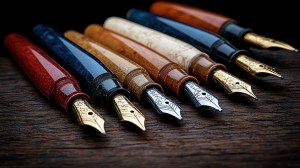How to Identify and Value Vintage Cameras: A Collector’s Handbook
Collecting vintage cameras can be a rewarding hobby that allows you to appreciate the craftsmanship of photography history. Whether you are drawn to the aesthetics, mechanics, or nostalgia of these classic devices, understanding how to identify and value them is crucial for any collector. This guide will help you navigate the world of vintage camera collecting with tips on identification, valuation, and care.
Understanding Vintage Camera Types
Vintage cameras come in various types, including rangefinder cameras, SLRs (Single-Lens Reflex), medium format cameras, and point-and-shoot models. Each type has its unique features and historical significance. To identify a camera’s type, look at its design; rangefinders often have a distinct viewfinder separate from the lens while SLRs include mirrors that reflect light through the lens into an eyepiece. Familiarizing yourself with these categories will enhance your collecting experience.

Researching Camera Brands and Models
Certain brands have established themselves as iconic in the world of vintage cameras. Companies like Leica, Nikon, Canon, and Rolleiflex are highly sought after by collectors due to their quality and reputation. Researching specific models can help you understand their place within photographic history as well as their market value. Online resources such as collector forums or dedicated websites provide valuable information about different models’ specifications and rarity.
Evaluating Condition for Value Assessment
The condition of a vintage camera greatly influences its value. When evaluating condition look for signs of wear such as scratches on lenses or body dents; functionality also plays a key role—camera shutters should operate smoothly without sticking or delay. A well-preserved example may fetch significantly higher prices than one in poor condition. Consider getting an expert opinion if you’re unsure about a camera’s working order before making a purchase.
Identifying Authenticity and Provenance
Authentication is vital when it comes to valuing vintage cameras. Counterfeits exist in this market particularly with high-demand brands like Leica or Nikon; thus ensuring original parts are present is crucial. Provenance – which includes ownership history or notable previous usage – can add additional value to your collection so keep any original documentation such as receipts or manuals when possible.
Caring for Your Vintage Collection
Proper care is essential for maintaining both functionality and aesthetic appeal in your vintage camera collection. Store your cameras in controlled environments away from humidity or extreme temperatures; use soft cloths for cleaning lenses without scratching them further; consider using protective cases during transport or storage to prevent physical damage over time.
With these guidelines at your disposal, you’re now better equipped to dive into the exciting world of vintage camera collecting. Remember that patience is key—finding rare gems takes time but knowing how to identify them properly will enhance not just your collection but also enrich your appreciation for photography’s past.
This text was generated using a large language model, and select text has been reviewed and moderated for purposes such as readability.












